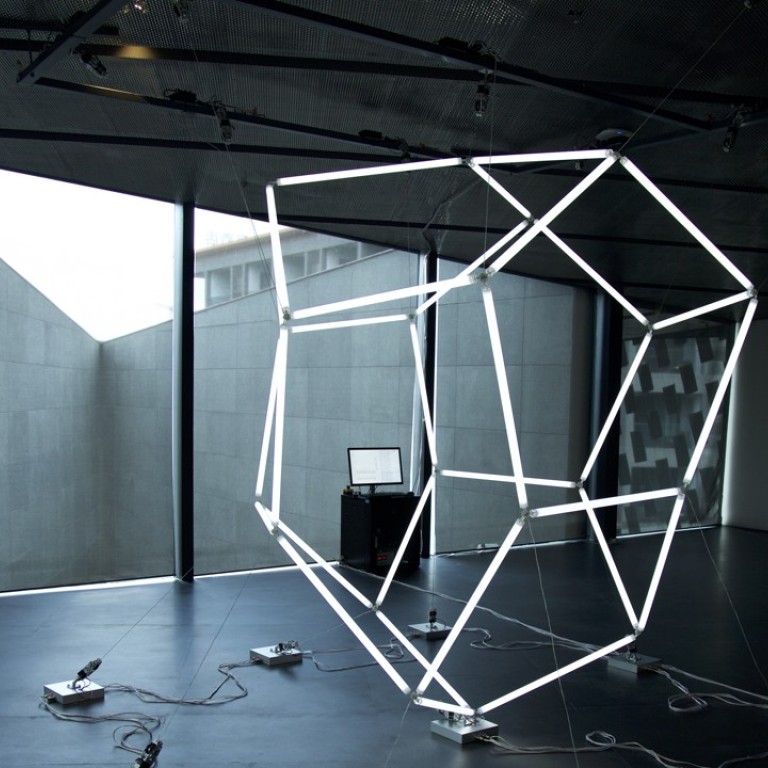
Chinese art museum finally takes shape with big-ticket items bought on a billionaire’s budget
Completed in 2011, the Zhi Art Museum near Chengdu is finally open for business, under the direction of businesswoman Zeng Baobao
Seven years ago, construction was completed on the Zhi Art Museum, which is located at the foot of Laojunshan, in Xinjin, about an hour from Chengdu, in Sichuan province. It had been commissioned by Hong Kong-listed Fantasia Holdings.
Visitors to this part of southwestern China, where Fantasia has also built an eco-resort and residential properties, have been impressed by the shimmering, slate-coloured building designed by Japanese architect Kengo Kuma. But online comments have pointed out that it is rather odd that there is no art in the art museum. So, is it just another pretend museumbuilt to accessorise a Chinese property development project?
Four years ago, Fantasia executive director Zeng Baobao, who is a niece of former vice-president Zeng Qinghong, hired independent art adviser Valerie Wang Conghui to help her build a collection, and they have since bought more than 200 works.
Ms Zeng [Baobao] doesn’t just hand me a big cheque and ask me to go shopping! She and I have been going to practically every major auction and art fair around the world
The Collector caught up with Wang at the Hong Kong spring sales last month. Just how crazy a shopping spree has it been to create a collection from scratch for someone who, according to research group Hurun Report, is estimated to be worth 7.6 billion yuan (US$1.2 billion)?
“Ms Zeng doesn’t just hand me a big cheque and ask me to go shopping! She and I have been going to practically every major auction and art fair around the world,” says Wang, who lives in Beijing. “Initially, there was no clear strategy about the museum’s content and we bought what we liked: fun works such as Li Jin’s contemporary ink paintings. But as we spent more time looking, a theme for the museum developed naturally: modern and contemporary art that conveys traditional Chinese aesthetics.”
The museum has splashed out on works by Zao Wou-Ki and Zeng Fanzhi. It is necessary to include the “two Zs” – whose works are, respectively, the most expensive in the modern and contemporary Asian art categories – for the museum to become an international authority on Chinese art and to lend its collection to other institutions, Wang says. But, she adds, the museum’s budget is too modest for them to take home paintings such as Zao’s 14.12.59 (1959), which sold for HK$176.7 million at Christie’s Hong Kong on May 26.
She refuses to disclose how much the museum has spent on art so far.
Hong Kong Palace Museum to cast its net wide: chairman
The museum’s collection is not going to make its name from big-ticket pieces, but rather by casting the net wide to include lesser-known names such as Hong Kong artists unfamiliar to the mainland audience.
Few mainland collectors have shown an interest in Hong Kong art, since most of them consider the SAR to be less culturally rich than cities at home. But Zeng, who has lived in Hong Kong, appreciates how the collision of Western and Chinese traditions has sparked a different kind of artistic practice that has made important contributions to Chinese art history, Wang says.
One of Zeng’s favourites is Hong Kong artist Luis Chan Fook-sin, who was born in 1905 and painted in an exuberant style influenced by Western art movements. Zeng has also acquired works by Walasse Ting and Lin Fengmian, who were heavily influenced by the West, too. This autumn, the museum will present a solo exhibition of Chan’s works as its inaugural in-house programme.
In April, it unveiled its first major exhibition, called “Open”, which consisted of new media art curated by Shanghai’s Chronus Art Centre.
Having a museum adds value to a company, both in terms of branding and by spreading good taste and design ideas to other parts of the business
If Zeng’s name rings a bell, it may be because of the 2013-14 news reports that linked her to the investigation of Zhou Yongkang, the now jailed, former security tsar who was once considered one of President Xi Jinping’s main political rivals. Fantasia reportedly had business dealings with Wu Bing, a Chengdu businessman who was close to Zhou.
All that is clearly in the past as Zeng jets around the world buying art for the museum, which will be financed by Fantasia for the next three to five years.
“Having a museum adds value to a company, both in terms of branding and by spreading good taste and design ideas to other parts of the business,” Wang says.

